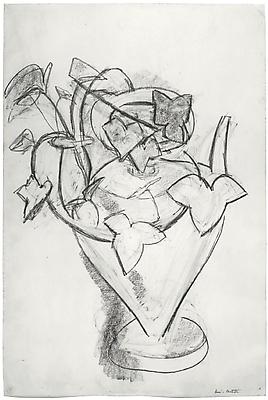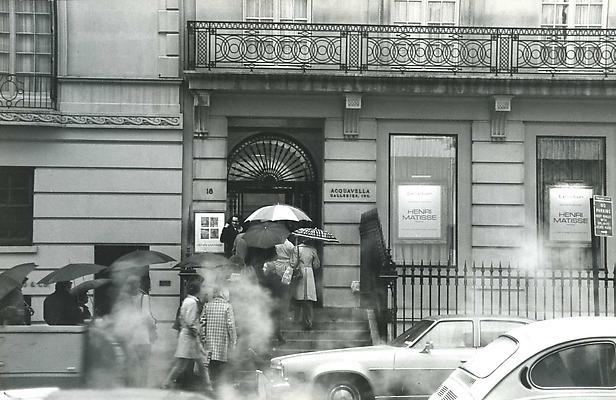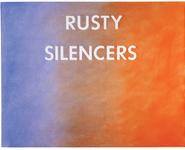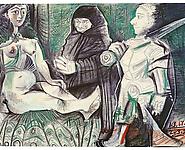Henri Matisse
Back to Artist ListCharcoal on paper, 22 x 14 3/4 inches
Artist Biography
Henri Matisse
1869-1954
For 60 years, Henri Matisse was committed to an art of bright color, harmonious forms and rich, exotic patterns; an art of the visual and aesthetic rather than conceptual or political.
THE FAUVE ADVENTURE
Matisse went to Paris in 1887 to study law. By 1890, he had decided to drop the law and become a painter, returning to Paris in 1891 to study art. He enrolled at the Ecole des Beaux Arts, a school grounded in tradition and academic training methods, a style reflected in his early paintings that were dark and sober. By the time he had his first one-person show at Galerie Vollard in 1904 after only six years of painting, the works had become bright and neo-Impressionist in style. For his next show in 1905, Matisse exhibited paintings that seemed very shocking, paintings with discordant, explosive, and luminescent color. These paintings, along with those of Raoul Dufy, Maurice de Vlaminck and André Derain, marked the beginning of Fauvism. The Fauves, translated as 'Wild Beasts,' stressed the use of strident color and expressive line that was unparalleled in the history of art. Although he worked in that style for only two years, it is the art with which he has been most closely identified. In reality, neither Matisse's life nor his art were wild, but rather an extraordinary attempt to reconcile the anxiety of the modern age, to make an art that exemplified comfort and balanced satisfaction.
EXOTIC INTERIORS
After the First World War, Matisse traveled and worked primarily in North Africa and the South of France. In hotel room studios, he painted small interiors infused with Mediterranean light and color, paintings with images of a model standing or sitting against an exotic carpet or fabric, an open window, and still life objects such as a vase of flowers, a plant, and perhaps some fruit.
PURE FORM
By the 1930's, Matisse's reputation had grown so that his work was in great demand in Europe and the United States. He had a number of important exhibitions in New York, Berlin, Basel and Paris, and even traveled to the Barnes Foundation outside Philadelphia to work on a large mural project, 'The Dance.' The images in the paintings, drawings and prints are more abstracted at this time, with an emphasis on line, color and surface.
THE GREAT CUT-OUTS
Matisse became ill in the 1940's and gave up oil painting, concentrating on line drawing and the decorations in the Chapel at Vence. Drawing and the paper cutouts of the 1950's could be done while seated, and this restriction opened up new avenues to explore. The paper cutouts of the 1950's epitomize simplicity and radiance, with no perspective or depth to the flat patterns of color. However, no matter how abstract, Matisse always insisted on the primacy of pictorial and figural representation.
Gallery Exhibitions
Catalogues
Works on Paper from Cézanne to Freud View
Download PDF (0 B)
Off Canvas: Drawing View
Acquavella Galleries
Acquavella Galleries, Inc.
18 East 79th Street (between Madison and Fifth Avenues)
New York, NY 10075
212-734-6300 Phone
212-794-9394 Fax
Follow @AcquavellaArt


 Off Canvas: Drawing
Off Canvas: Drawing
 Works on Paper from Cézanne to Freud
Works on Paper from Cézanne to Freud